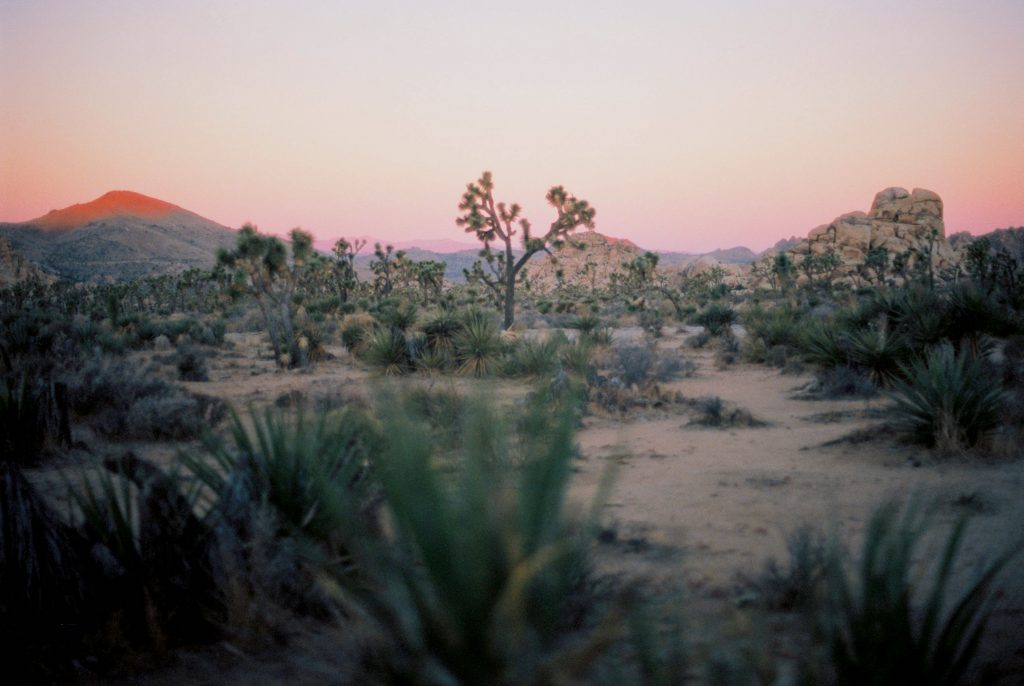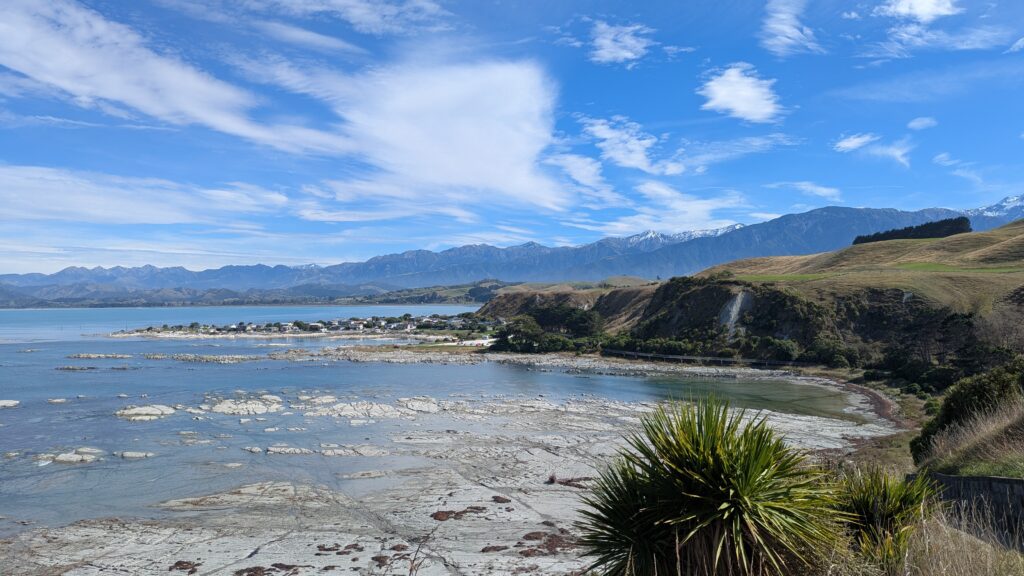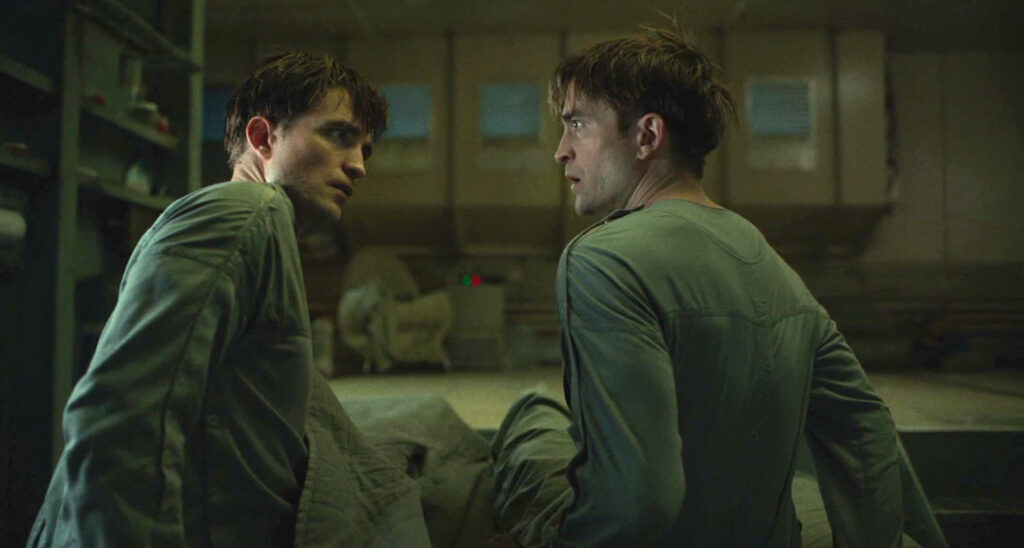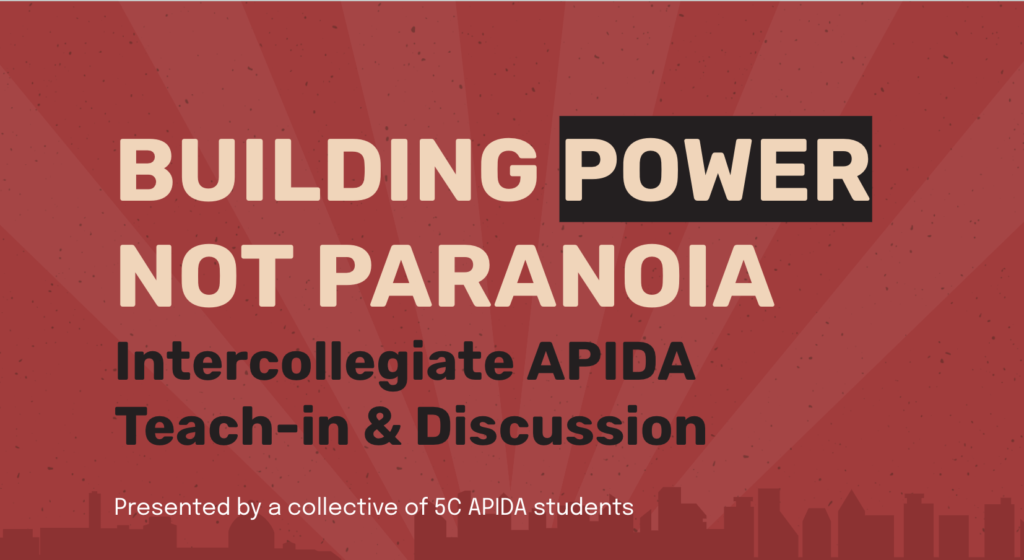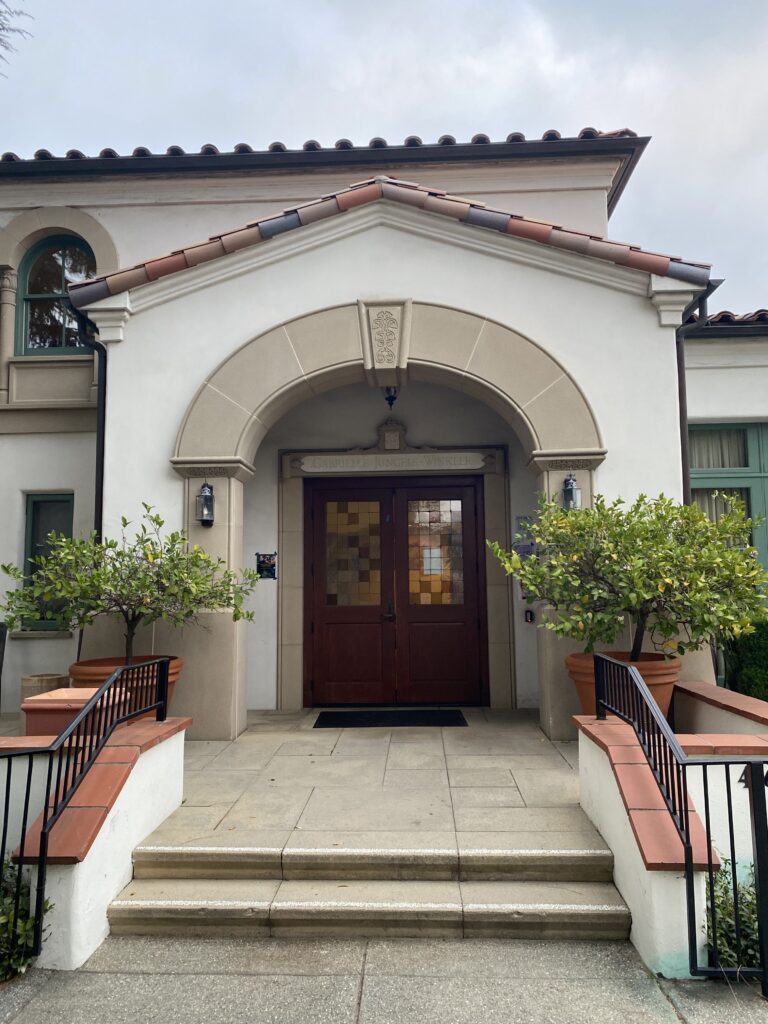Ella Boyd ’22
Guest Writer
Joshua Tree, a national park located about two hours east of Claremont, is a popular weekend destination for college students, climbers, van lifers, and visiting campers alike. The park is aptly named after the many Joshua trees that line the roads and dot the jagged hills — when driving through the park, there is an eerie, open effect subdued only by the few other visitors hauling crash pads through the desert trails.
The Joshua trees don’t remind one much of trees at all. There is even a song called “Secret Enchanted Broccoli Forest” which, to be honest, is the best description of the park I can give to anyone who hasn’t had the chance to see it in person for themselves.
I say in person because there is a difference between places you see and places you experience. Joshua Tree is the latter. There is a distinct, inescapable feeling of both alienation and intense serenity inside the park. Again, it’s not so much explainable as relatable to other park visitors.
When sitting on a classic Joshua Tree boulder, perhaps near a full-grown, bushy Joshua tree, you are simultaneously aware of your proximity to other people, and yet, you are fully alone with your thoughts. Joshua Tree is a place for reflection, a place for transcendence. I thought I was the only one who felt this way. I was wrong.
The desert itself is spiritual: in the words of Italian spiritual writer Carlo Caretto, “The desert does not mean the absence of men, it means the presence of God.” And though Joshua trees are often described as “grotesque” or “the most repulsive tree in the vegetable kingdom,” they are also often referred to as comforting. There is a strange, unexplainable pull to the area.
Perhaps that is why so many spiritual retreats occur in the park, such as the Joshua Tree Retreat Center, also known as the Institute of Mental Physics. It is the oldest and largest retreat center in the Western United States.
My initial reaction was that it must be some kind of scam, but it seems that it is not. The JTRC is a non-profit organization. The Institute operates on the teachings of Ding Le Mei, or Edwin J. Dingle (wonder why he changed his name, right?), a journalist in China who explored Asia in a quest for spiritual knowledge, ultimately combining eastern and western philosophies to form the Mentalphysics Spiritual Teaching and Retreat center in 1941.
Interestingly, though, Mei, or Dingle, was a world-renowned geographer. In fact, his “New Map of China” became China’s standard map. I bring this up because this man, clearly, had seen a good chunk of the world before landing in Southern California. He’d seen places that are considered spiritual, even. So why did he found his school in Joshua Tree?
Ding Le Mei chose the location because it sat on 19 energy vortices which were thought to draw in intense energy and an ideal place for personal exploration. Mei also believed Yucca Valley was “sacred desert land,” and he built the school in harmony with the lines of earth energy in the area, as well as employing Frank Lloyd Wright and his son, both architects, to design a building that would act as an energy vortex.
Famous speakers, such as Ram Dass and Deepak Chopra have presented at the Institute. Festivals at the institute, such as Bhakti Fest, also known as a “Spiritual Woodstock,” have received massive gatherings of devotees, with thousands of people practicing yoga and meditating in the crisp desert air.
Joshua Tree is known for its spiritual elements. With spirituality, the tricky thing is that there are only stories. But Joshua Tree has stories. Some believe the Joshua Tree is a symbol of Christian spirituality: the silhouette of Joshua raising his hands towards the sky in prayer. Others see the Joshua Tree as a historical sign for the Jews to go to Jericho, a city in Palestine.
The park is also home to many indigenous tribes, such as the Serrano, Chemehuevi, Mojave Cahuilla, and the Mojave. Who better to look to for a historical perspective on the land and the feeling one gets from the land? For thousands of years, these groups embraced the tree as a spiritual resource. The Cahuilla referred to the land as “magical,”and the Chemehuevi had a rich culture of sharing spiritual stories. These stories often involve incorporating aspects of the local people, animals, and land around them. These aspects make up what we now know as Yucca Valley and Joshua Tree.
Ultimately, we’ll never know for sure if there exists energy vortices with special powers on this desert land. But we do know that this area continues to draw people in for many reasons: to find themselves, to lose themselves, to do drugs, to meditate, to take photos, to climb, to hear spiritual leaders share ideas, and to explore. But while we come and go, off the famous highway and into the sacred park, we all leave with one thing in common: having had the transformative experience of visiting Joshua Tree.
Image Source: Ella Boyd ’22

